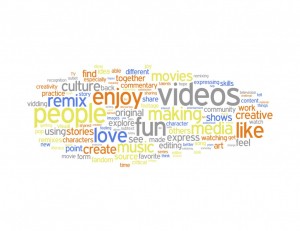Dear community,
We are currently conducting a survey for a Remix Studies book project and we would really appreciate your help. The survey is quick and easy and should take no more than a few minutes of your time. Your assistance will be invaluable in the development of the book, which we hope will be of great use to students, teachers, researchers and practitioners of remix alike.
If possible, we would also be very grateful if you could help us to distribute the survey to anyone within your networks who has an interest in remix.
https://www.surveymonkey.com/s/C9MGRVV
Thank you very much for your time and effort – we value your input.
Kind regards,
Eduardo, Owen and xtine
Eduardo Navas
http://remixtheory.net
http://navasse.net
Owen Gallagher
http://www.remixstudies.org
http://www.totalrecut.com
http://www.criticalremix.com
xtine burrough
http://www.missconceptions.net

